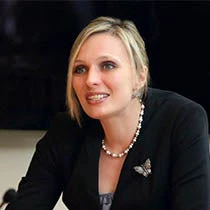 Working together to defeat COVID-19
Working together to defeat COVID-19
Early successes in fighting the COVID-19 pandemic, such as in Australia or South Korea, have been partially ascribed to seamless coordination among ministries, departments, and agencies, and across the levels of government within these countries. At the same time, nations that struggle to contain the pandemic bemoan the lack of coordinated response by local and central authorities, or among different government agencies.
Will the same coordinating mechanism work everywhere? What advice can we give to governments in small island states as opposed to large landlocked federations? What about those in low-income countries, or others in higher-income settings?
We find that to be successful in containing the pandemic, the center of government should be performing similar functions – and yet the actual mechanisms will adapt significantly to country context. The four basic coordinating functions at the center include:
- Policy-setting and decision-making. This includes setting up a center of command, close to the chief executive and tasked with high-level oversight of the whole-of-government response. For example, Cambodia set up a National Response Committee, chaired by the Prime Minister, responsible for identifying national policy and strategy in response to COVID-19 and leading the implementation plan.
- Operational coordination. This includes oversight of action plans, underpinned by budgets, as well as inter-agency coordination systems. Response plans with concrete targets should be activated. Consequently, detailed delivery maps with granular implementation responsibilities, accountabilities, timelines can be drawn. Along these lines, Cameroon developed a comprehensive multi-sectoral response plan, while Djibouti established a COVID-19 Emergency and Solidarity Fund to ensure transparency in the collection of domestic resources and the execution of the COVID-19-related expenditure related. Djibouti has also established a high-level multi-sectoral committee led by the Prime Minister to enhance coordination among technical counterparts to facilitate interventions and provide support to the population during the pandemic.
- Information gathering and monitoring & evaluation. This is achieved through dashboards and monitoring routines, whereby responsible agencies feed the data into dashboards at regular intervals. Problem-solving mechanisms should accompany the monitoring, as should internal communication mechanisms to keep various parts of government on the same page. For instance, Brazil created an Inter-secretariat Data Committee that developed a detailed Risk Matrix, a public Data Dashboard with live updates, and a comprehensive and evidence-based strategy for reopening economic activities.
- External communication aimed at consensus building. This can take various forms, from daily press briefings with high-level officials to diligent communication campaigns on multiple platforms promoting handwashing, social distancing, and face covering. Transparency about infections, hospitalizations, and mortality is also important to reinforce trust and therefore compliance. The Premier of Victoria had daily press conferences for more than 110 days, and only stopped them when there were no more deaths or cases.
These four basic coordinating functions lie at the heart of successful responses to the health and economic impacts of COVID-19. In a follow-up blog next week, we will explore how a country’s specific context will factor into how they utilize these functions in their efforts to contain the pandemic.
For more analysis relying both on the lessons from the center-of-government literature as well as on the emerging data reported by the World Bank Governance staff around the world, see a recently published World Bank working paper.



Join the Conversation